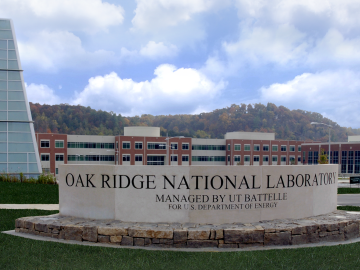
Updated software improves slicing for large-format 3D printing



Four researchers at the Department of Energy's Oak Ridge National Laboratory are among 44 scientists selected by DOE's Office of Science to receive funding under the department's Early Career Research Program.

Run-2 for the Large Hadron Collider (LHC)—the world’s largest and most powerful particle collider—began April 5 at CERN, the European Laboratory for Nuclear Research. In preparation, Thomas M. Cormier, who leads the LHC Heavy Ion group at Oak Ridge National Laboratory, led an upgrade of the electromagnetic calorimeter used for LHC’s experiment called ALICE (for A Large Ion Collider Experiment).







